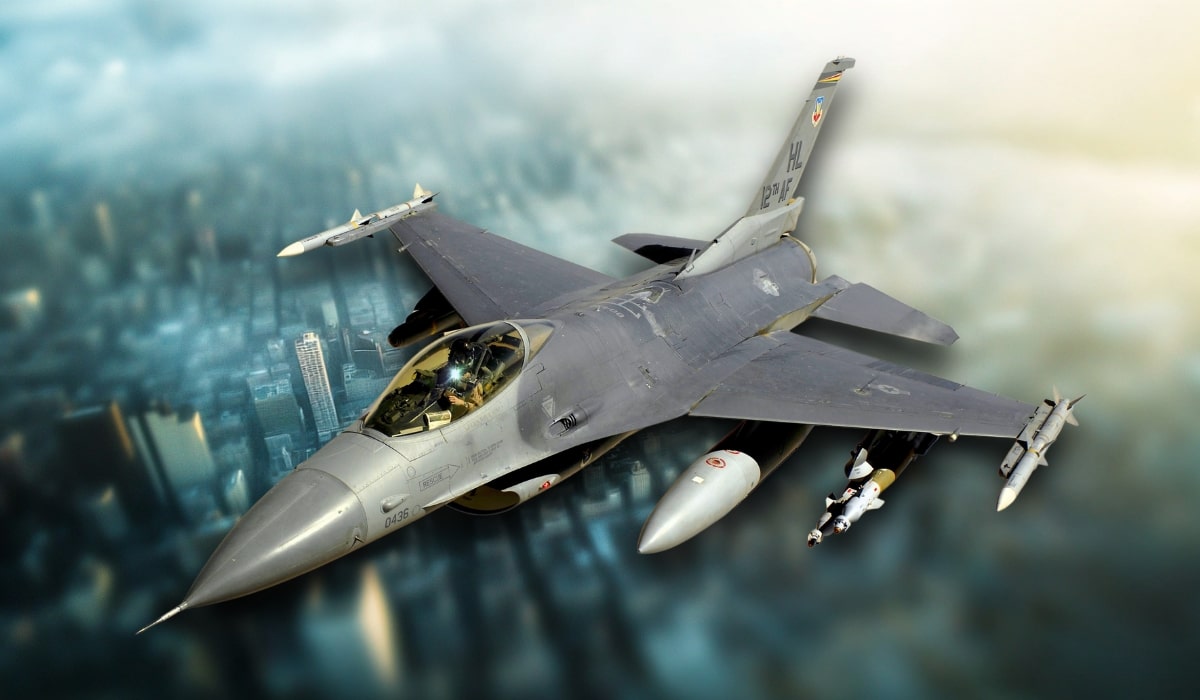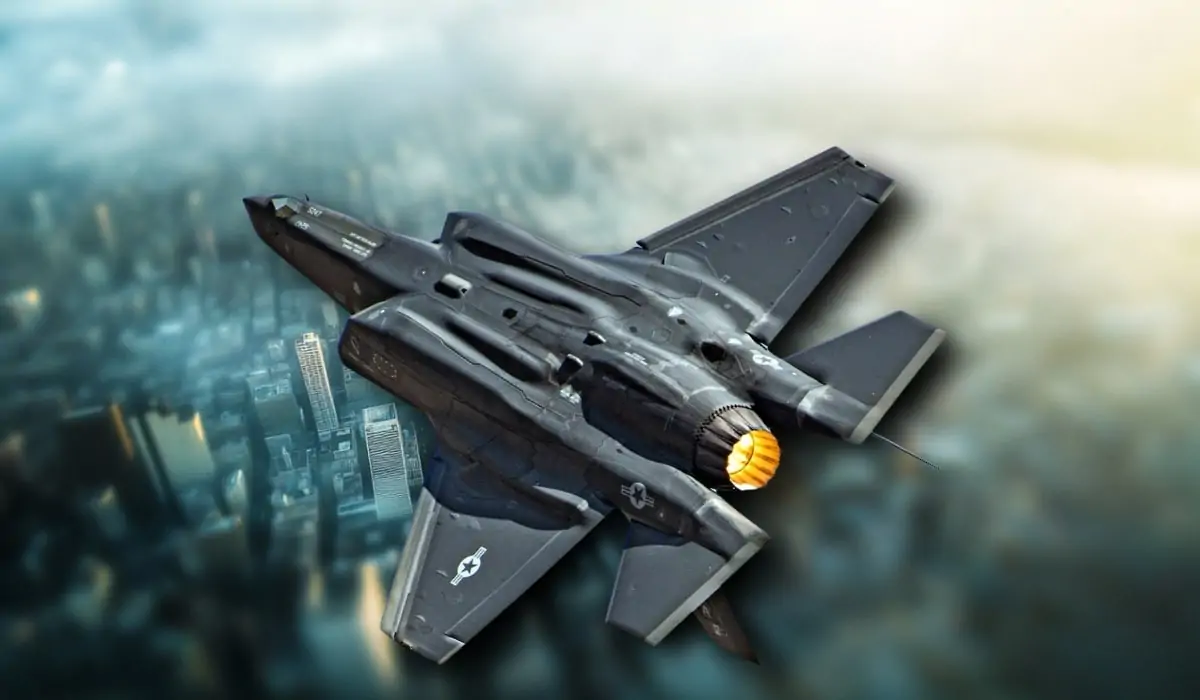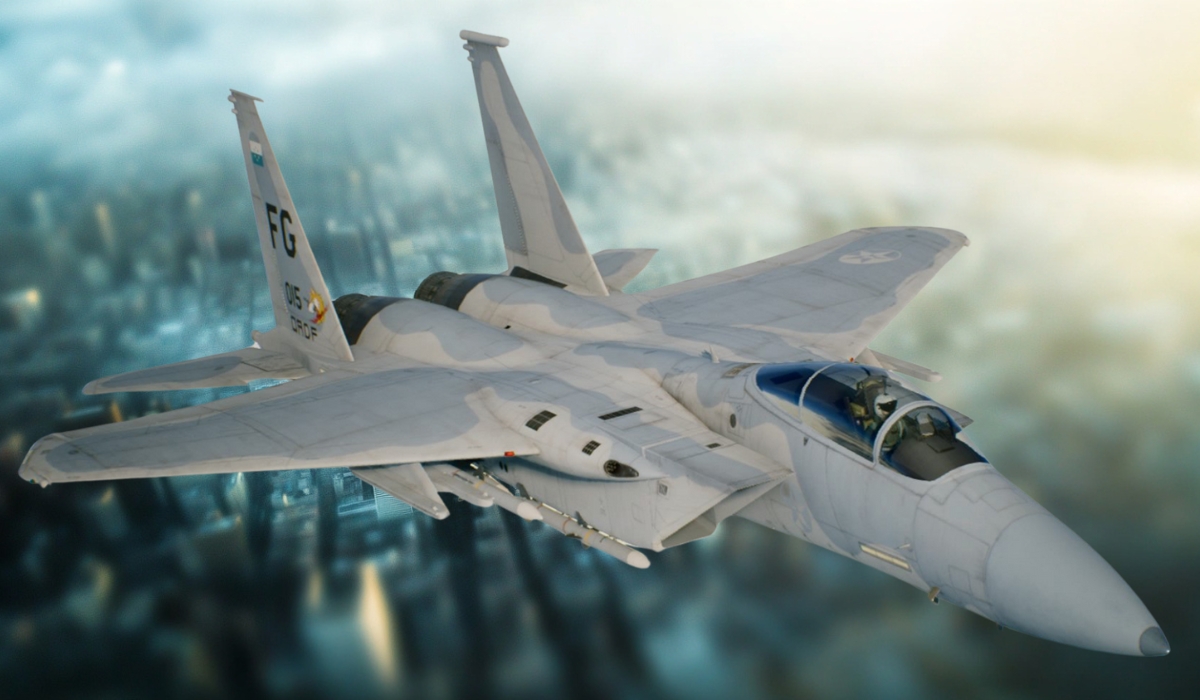Fighter jets play a critical role in the U.S. military, serving as a key element of national defense and global power projection.
They enable rapid response, maintain air dominance, and support ground operations.
With ever-evolving threats and technological demands, maintaining a strong fighter jet fleet remains essential to U.S. military readiness.
Table of Contents
ToggleTotal Number of Fighter Jets in 2025
In 2025, the United States Air Force is projected to maintain a fleet of 1,295 active fighter aircraft, according to Statista.
Such a volume underscores a deliberate commitment to maintaining overwhelming air combat readiness. The number reflects how the U.S. combines legacy platforms with advanced multirole fighters.
Several defense and aerospace organizations back this data, pointing out how fighter aircraft form the core of the U.S. air power strategy.
- Air defense
- Tactical superiority
- Deterrence
To better understand how this force is structured, consider the following key elements:
- The fleet includes older airframes like the F-15C Eagle alongside next-generation models such as the F-35A Lightning II.
- Aircraft serve multirole, strike, and air superiority functions. Flexibility across mission profiles ensures preparedness for any combat or deterrence scenario.
- Fighter jets are deployed across multiple continents, reinforcing American presence in strategic regions such as the Indo-Pacific, Europe, and the Middle East.
- Many aircraft types are operated or supported by NATO and other partner nations, streamlining joint operations.
Modernization initiatives ensure that numbers are backed by quality, with each platform upgraded regularly or replaced through planned procurement cycles.
Interesting Fact: According to AirForce Times, 6 in 10 aircraft in the Air Force’s fleet were able to carry out their missions on an average day in 2024.
Breakdown by Aircraft Models
| Aircraft Model | Primary Role | Key Features |
|---|---|---|
| F-16 Fighting Falcon | Multirole | Air-to-air and ground attack, agile, cost-effective, widely used |
| F-35A Lightning II | Strike | Stealth, advanced sensors, networked warfare capabilities |
| F-15E Strike Eagle | Strike | Long-range, heavy payload, effective in day and night missions |
| F-22A Raptor | Air Superiority | Stealth, speed, maneuverability, unmatched in air-to-air combat |
| F-15C Eagle | Air Superiority | Proven design, reliable performance, upgraded avionics |
| F-15EX Eagle II | Multirole | Modern avionics, enhanced payload, early stage of operational deployment |
U.S. Air Force operations in 2025 rely on a fleet structured for tactical flexibility and strategic reach.
- Design
- Mission capability
- Deployment purpose
F-16 Fighting Falcon

The F-16 remains the most numerous aircraft in the fleet. Its multirole capability allows for both air-to-air combat and ground attack missions.
Designed for agility and speed, it has proven adaptable across decades of upgrades.
Pilots benefit from modern radar systems and targeting technology, keeping the aircraft relevant in contemporary warfare.
Operational costs remain relatively low, making it a cost-effective option for multiple mission types.
- Single-engine configuration with excellent thrust-to-weight ratio
- Proven record across multiple conflicts and air campaigns
- Compatible with a wide variety of munitions and targeting pods
Interesting Fact: In April 2025, the Phillipines bought F-16 fighter jets from the US for $5.58 billion.
F-35A Lightning II

The F-35A represents the cutting edge of U.S. airstrike capability. Designed for low observability, the aircraft carries an internal weapons bay, stealth shaping, and radar-absorbent materials.
It performs strike missions with precision while collecting and sharing intelligence across battle networks. Interoperability with joint forces and allies further strengthens its value.
- Stealth design for reduced radar cross-section
- Sensor fusion and helmet-mounted targeting systems
- Real-time data sharing between air and ground assets
F-15E Strike Eagle
F-15E aircraft serve in ground strike roles. Built for speed, range, and payload, the aircraft excels in both day and night conditions.
Its two-seat configuration allows one crew member to focus on flying while the other manages sensors and weapon systems.
Capable of operating in harsh environments, the Strike Eagle is often tasked with deep interdiction and strategic targeting.
- Twin-engine design for sustained thrust and reliability
- Large payload capacity for precision-guided munitions
- All-weather strike capability with modern avionics
F-22A Raptor

The F-22A serves as the primary air superiority fighter. Built with advanced stealth and thrust-vectoring capabilities, the Raptor dominates in aerial combat.
Designed for quick engagement and fast withdrawal, it typically operates ahead of other forces, clearing the way for follow-on assets. Its advanced sensors and radar give it first-look, first-shot, and first-kill advantages.
- Supercruise capability without afterburner
- Internal weapons bays to maintain stealth profile
- Exceptional agility for close-in engagements
F-15C Eagle

Despite its age, F-15C fighters remain operational due to ongoing upgrades. It retains a powerful radar system, solid speed, and strong air-to-air missile capability.
Known for its kill-to-loss ratio, the F-15C still provides crucial defense for U.S. airspace and operates in tandem with more modern platforms.
- Proven airframe with decades of successful missions
- Long-range sensors and weapons systems
- High availability and mission readiness rates
F-15EX Eagle II
The F-15EX is entering the early stages of deployment. Designed to replace aging F-15C models, it brings multirole versatility with increased survivability.
Equipped with state-of-the-art avionics, open mission systems architecture, and expanded payload options, it promises long-term value as production scales up.
- New electronic warfare systems
- Fly-by-wire controls
- Capability to carry hypersonic weapons
Fighter Jet Production Rates
Fighter jet production plays a role in maintaining operational capability, replacing aging airframes, and supporting allied forces through export agreements.
U.S. manufacturers continue to deliver high-performance aircraft across several lines, guided by defense contracts, projected combat needs, and evolving strategic objectives.
Pentagon Greenlights F-35 for Full-Rate Production
From @TheWillPorter
The US military has approved the F-35 fighter jet for full rate production, authorizing the move after a five-year delay. Though hundreds of F-35s have already entered US and foreign service, the plane only… pic.twitter.com/8ATxVdUiNE
— Kyle Anzalone (@KyleAnzalone_) March 14, 2024
F-35 Lightning II
According to Business Insider, approximately 150 units of the F-35 are produced annually across all variants, including:
- F-35A (Air Force)
- F-35B (Marine Corps)
- F-35C (Navy)
A large share supports U.S. military branches, while the rest fulfills international orders.
Designed for multirole functionality, the aircraft is considered central to future air operations. It features advanced stealth, electronic warfare capabilities, and integration with joint force networks.
- Assembly takes place across multiple domestic and international facilities
- Over a dozen allied nations are part of the F-35 program
- Production rate remains steady due to global demand and multi-branch utility
F-16 Fighting Falcon
Production continues primarily for foreign military sales. Lockheed Martin has modernized the line to deliver advanced F-16V variants with updated radars, avionics, and structural enhancements.
A planned increase brings the rate to 48 units per year by 2025. Despite being a legacy platform, export interest remains strong due to its proven record and cost-effectiveness.
- Production centered at the Greenville, South Carolina facility
- Customers include NATO members and key allies in Asia and the Middle East
- Airframes receive compatibility upgrades to support modern weapons systems
F-15EX Eagle II
Boeing delivers approximately 36 units per year of the F-15EX, designed to gradually replace older F-15C and F-15E models.
Enhanced payload, survivability, and open architecture make it suitable for high-end conflict scenarios. Though not stealthy, the platform remains useful due to speed, altitude, and versatility in weapons carriage.
- Two-seat configuration with advanced displays and controls
- Weapon stations allow carriage of up to 22 air-to-air missiles
- Digital backbone supports future system upgrades with minimal delay
F/A-18 Super Hornet
Production of the F/A-18 Super Hornet is being phased down, with annual output reduced to 18 units in 2025.
The Navy continues to accept deliveries for replacement and replenishment needs, but long-term planning signals the closure of the line by 2027.
Aircraft produced in this final phase support carrier air wings and fulfill remaining international orders.
- Delivered aircraft meet Block III specifications with improved range and survivability
- Cockpit systems upgraded for network-centric warfare
- Shutdown planned as part of the shift toward newer airframes like the F-35C
Future Developments
.@POTUS, @SecDef & I just announced the @USAirForce will build the world’s first 6th-gen fighter jet: the F-47! It will be the most advanced, lethal, & adaptable fighter ever developed, designed to outpace, outmaneuver, & outmatch any adversary that dares to challenge our Airmen.
— General David Allvin (@OfficialCSAF) March 21, 2025
Next-generation planning within the U.S. Air Force focuses on redefining air combat capabilities through the Next Generation Air Dominance (NGAD) program. At the center of this initiative is the F-47, a sixth-generation fighter jet designed to outperform anything currently in service.
Boeing leads the development, with a focus on disruptive innovation in speed, stealth, and autonomy.
F-47 will replace the F-22 Raptor, which has served as the premier air superiority fighter for nearly two decades. Unlike its predecessors, the F-47 will feature artificial intelligence-assisted operations, reduced radar detectability, and seamless integration with unmanned systems.
Multidomain warfare is a major design focus. Air, space, and cyber elements will all be synchronized through advanced data fusion and sensor sharing. Rapid target acquisition, electronic warfare resistance, and autonomous threat analysis will all contribute to operational advantage.
Production timelines project an initial operational capability sometime in the 2030s. In the meantime, the program continues full-scale prototyping, live testing, and systems integration.
The Bottom Line
U.S. air superiority remains unmatched due to a vast and varied fleet of fighter jets.
With the continued production of advanced aircraft and the development of sixth-generation systems, American dominance in aerial warfare remains firmly in place for the foreseeable future.
Related Posts:
- U.S. Navy Secures $10B Contract to Bolster…
- What are the Fastest Military Jets in the World in 2025?
- How Many Guns Are in America in 2025? Looking Down…
- How Many Navy Fleets Does the US Have in 2025?
- How Many Immigrants Came to the US in 2024? - What to Know
- How Many WW2 Veterans Are Still Alive? Will There Be…







